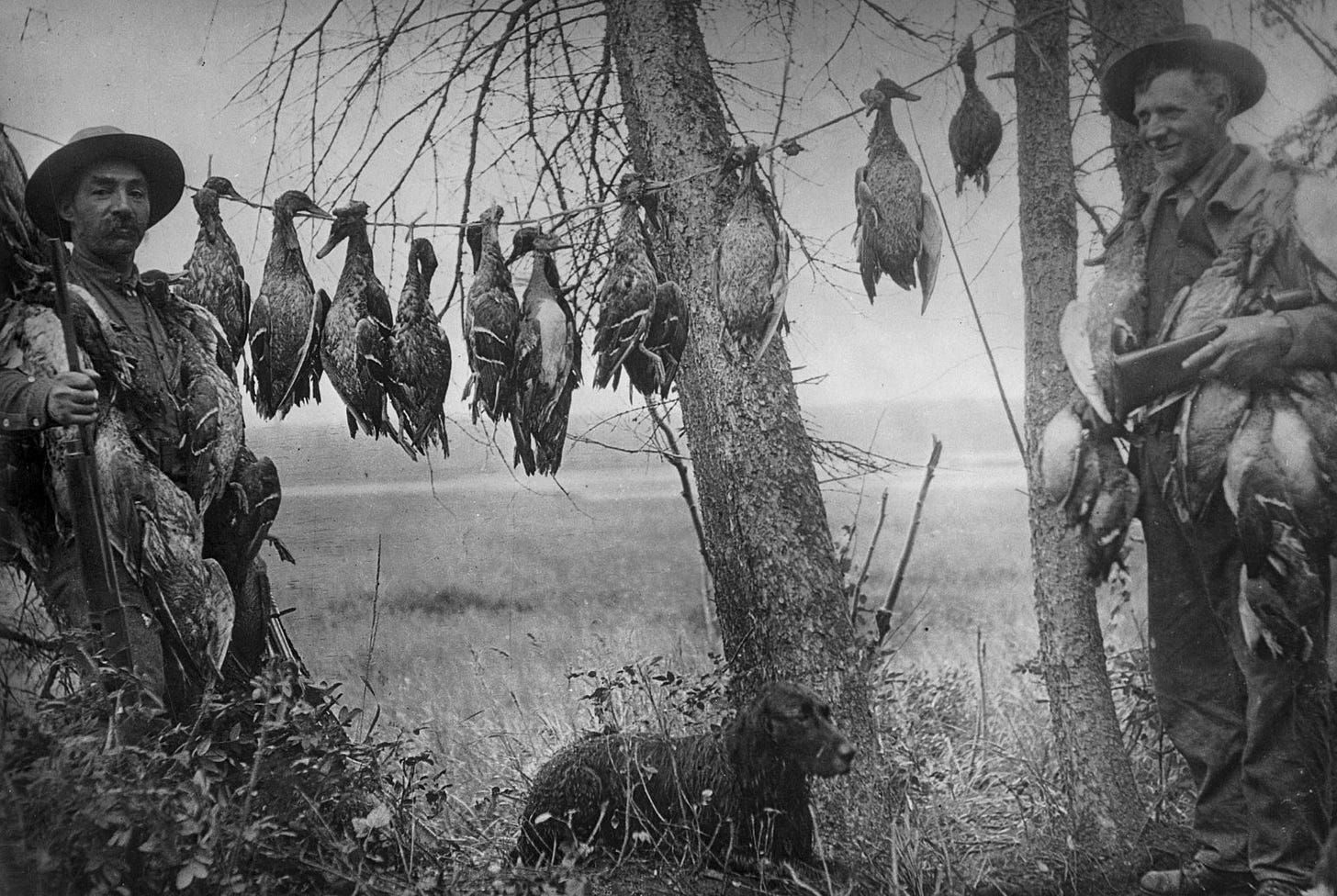Plover Joe
“He may be Italian or Corsican, but he’s a Napoleon in his art.”
In the late 1800s and early 1900s, a flood of immigrants from central and eastern Europe came to the United States to work as millhands, lumbermen, and miners. I know this firsthand because my great-grandparents and grandparents were among them. Theirs was difficult, dangerous, and menial work. My great-grandmother’s first husband died in an accident in Saxonburg, Pennsylvania, while dynamiting at a quarry for The Standard Plate Glass Company.
Many, many immigrants also came west to Chicago to work in the steel mills, stockyards, and related industries. Among these immigrants was an Italian man named Joseph Paoli, who ran a fruit stand on Wabash Avenue. According to one account, he was of average height and slim frame with light hair and blue eyes. He would have been in his 30s around 1890.
We only know of Joseph Paoli because of his prowess at hunting plovers. At this time, all manner of waterfowl and shorebirds were being hunted for higher-class eateries in Chicago and other big cities.1 Those acquiring the birds from the fields were variously called market hunters or market gunners. It was a rough existence for most of them in the hinterlands of the big cities. One surmises that they were gunning for market sales and likely their own dinner tables.2
Joseph Paoli was among those who lived in the city and took the trains and streetcars to nearby locales like Riverside, Summit or even Willow Springs. These outings are quaint by today’s standards—these places are now heavily developed suburbs that lay well within the borders of very urban Cook County. But back then, these were fairly wild sections along the modest rise known as the Des Plaines Divide. Wrote one correspondent with the periodical Forest and Stream:
“Summit is a favorite resort of the actual or would be plover shooters, and every Sunday that station and Riverside, two miles higher up, are filled with young, old, and uniformly beer-loving shooters,3 who would be charmed to kill a jacksnipe, delighted to kill a plover, pleased to kill a meadowlark and quite content to kill a robin, a thrush, a bluebird, or a sparrow. This rabble does not usually get so far down as Willow Springs, and often there is good shooting at the point.”
Forest and Stream catered more toward wealthy hunters—a subscription cost some money after all—but left space to mention people like Joseph Paoli, who they alternatively called Plover Joe and Italian Joe. His knowledge of plovers and his skills with a scattergun were too impressive to ignore.
“He may be Italian or Corsican, but he’s a Napoleon in his art,” wrote one admiring Forest and Stream correspondent. I take this to mean he was good at strategy: savvy with calling in plovers, knowing how to factor in the wind, and placing decoys at just the right places. It was best to set up the decoys near a grassy pasture, otherwise the plovers might land in a plowed field and be harder to find.
Joseph was generous with sharing his knowledge with others, even to those who wrote him off as a foreigner. Everyone knows the angler who won’t let on to the best fishing holes or the birder who mothballs a few good sightings. That wasn’t Plover Joe.
I haven’t found another Forest and Stream article in the era that so thoroughly captured the perspective of a market hunter, let alone an immigrant. One correspondent, E. Hough, who was based in Chicago and also wrote about Prairie Chickens, wrote positively of Joe even when mimicking his accent and lumping him in with “the rabble.” But in one encounter, Joe let Hough take the first shot at a passing flock, a magnanimous gesture in the sporting world. It seems the bonds of sport might have let Hough see past his prejudices.
“There is no man on this green earth who can compare with him in his art,” Hough later wrote. “Let us be fair to all men. When we have been, we will be forced to admit that a market hunter is still a man.”
Chicago hotels paid $1.50 to $1.75 for a dozen plovers. Paoli might shoot up to 60 plovers in a day.
There was a divide between the market hunters, who were primarily immigrants, and the upper-crust hunters with more resources and a greater emphasis on etiquette. Likely a topic for another post someday.
“Beer-loving” was a phrase wealthier sportsmen used to describe their uncouth counterparts among the market hunters.




So interesting to ponder this part of Chicago history. I love the survival of the underdog who mastered his craft aspect. Of course I would be mortified today to see a hunter taking these birds.
Just the mention of the streetcars brought back so many memories of things my parents and grandparents talked about and how they lived!